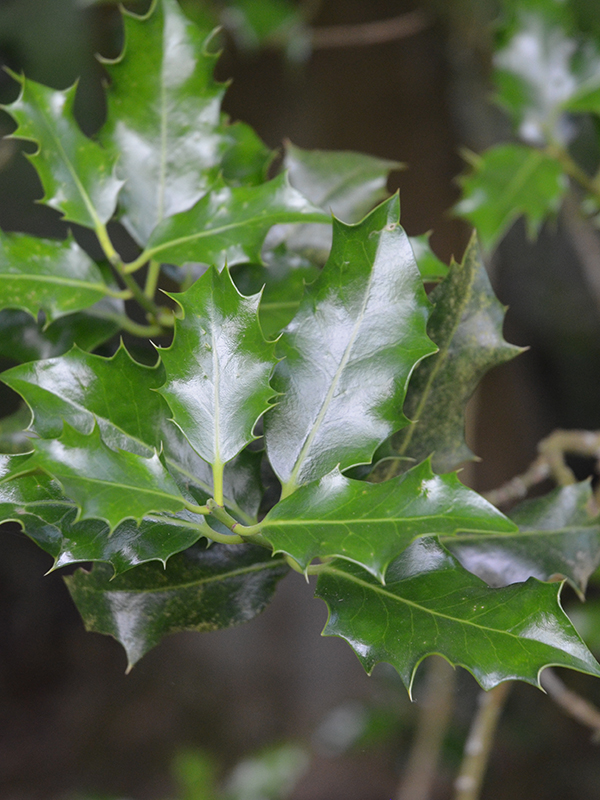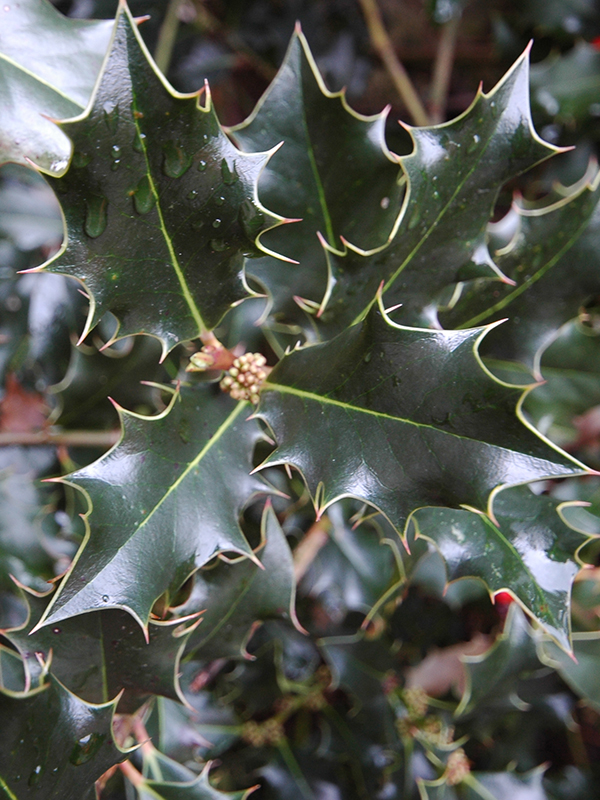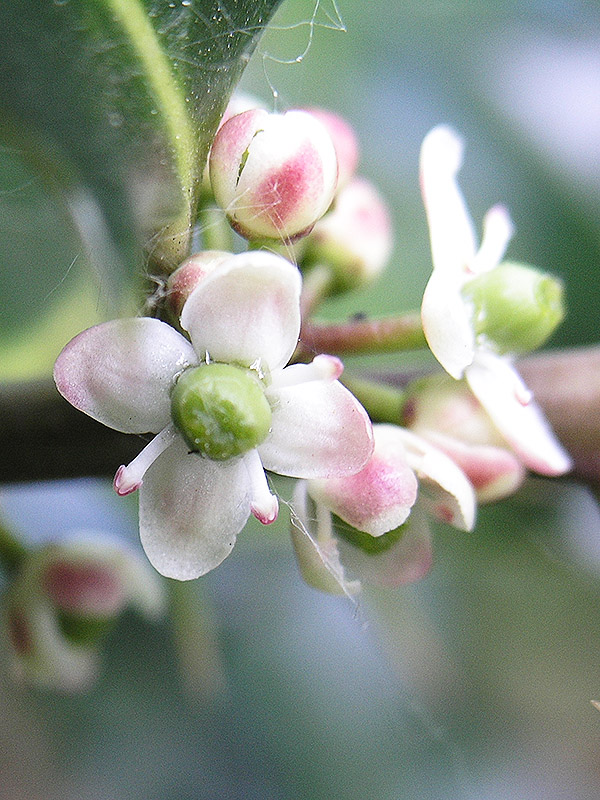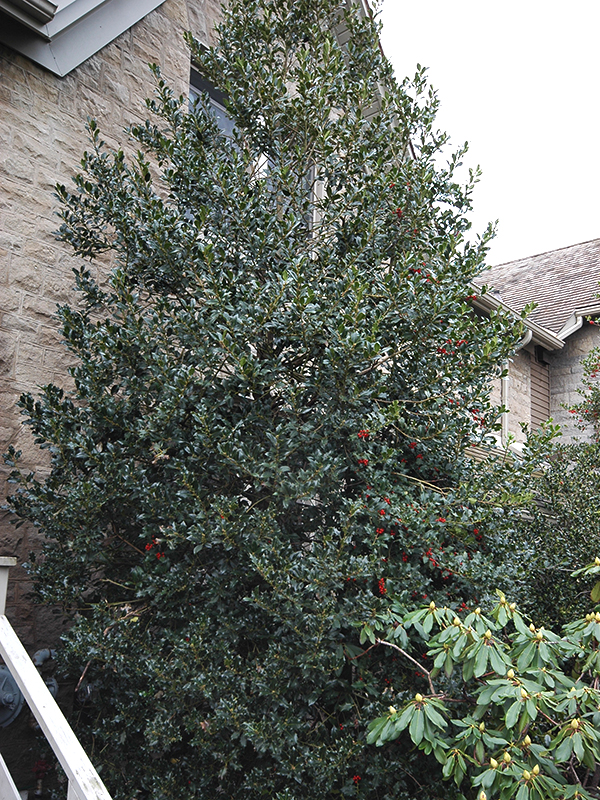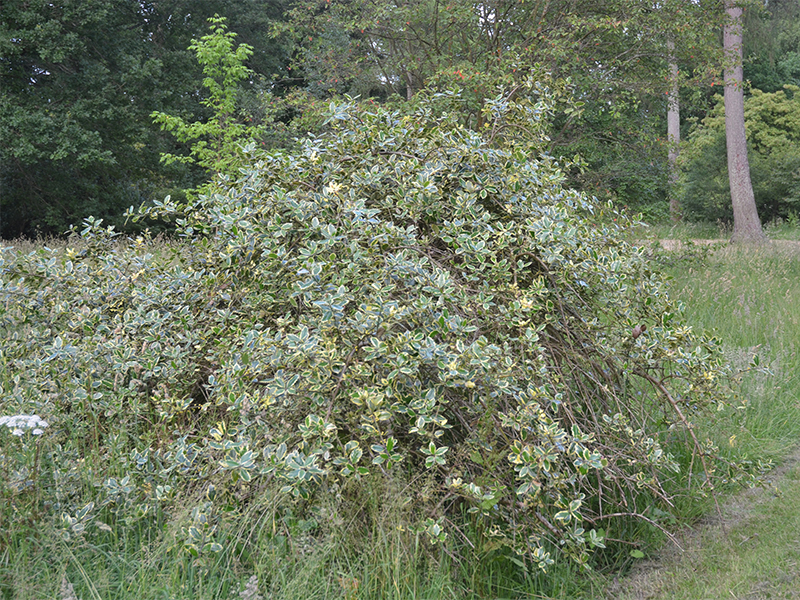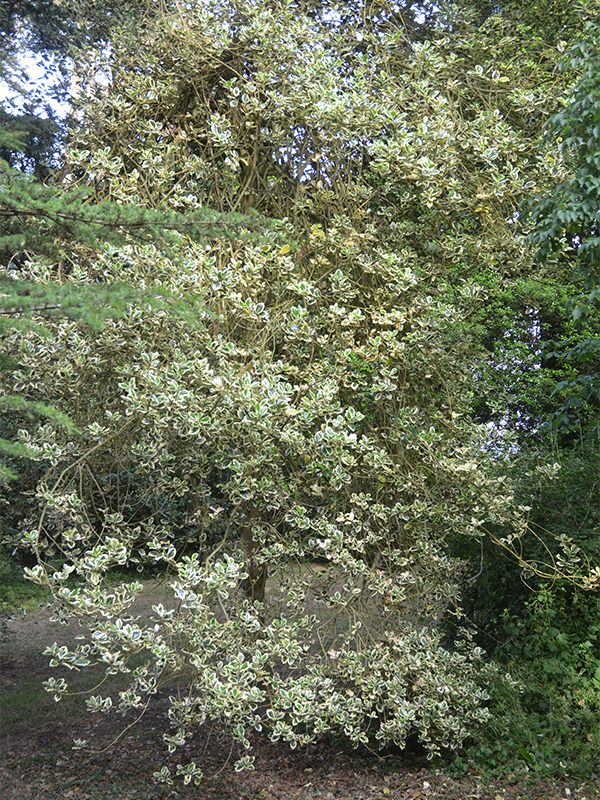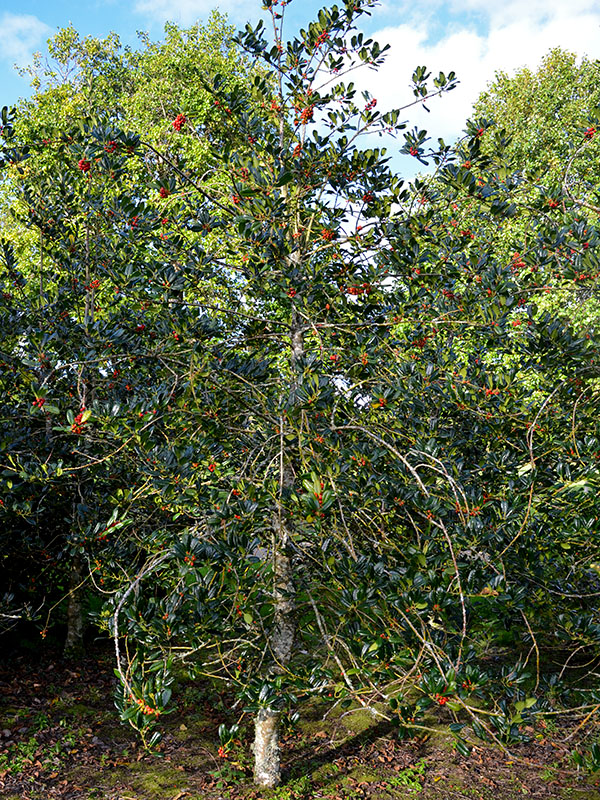
Woody > Ilex > Ilex aquifolium > Ilex aquifolium
Ilex aquifolium
European Holly
Origin: Southern Europe, western Asia and northern Africa.

"
Ilex aquifolium is well known as a Christmas decoration. Growing as a shrub or tree, there have been many cultivars produced most notably because of its fruit, which appears as typically red berries in the autumn, and its dark green spiky foliage. Unlike most plants, Ilex aquifolium has a history rich in Folklore. The ancient Greeks believed it represented foresight. The ancient Romans believed it symbolized goodwill and they sent it to their friends and relatives during Saturnalia. The ancient Chinese used it to decorate their homes in February to celebrate the New Year. It was introduced as an indoor decoration by Christians who believed the red berries and spiky leaves represented the thorn of Christ and his sacrifice of blood. The Welsh would not bring Holly into their home before Christmas because they felt it would start arguments. Early Europeans felt that Holly used in their landscapes would ward off evil. Native Americans used the Holly to make a tea in order to test their warriors. If the warrior could not hold down the tea, they could not be sent on important tasks. Hard to believe one species of plant could invoke such differing superstitious beliefs in a vast number of disjunct cultures.
Michael Pascoe, NDP., ODH., CLT., MSc. (Plant Conservation)
"
| Family |
| Aquifoliaceae |
| Genus |
| Ilex |
| Species |
| aquifolium |
| Category |
| Woody |
| Type |
| Tree (evergreen) |
| Pronunciation |
| USDA Hardiness Zone |
| 7 - 10 |
| Canadian Hardiness Zone |
| 6a - 8a |
| RHS Hardiness Zone |
| H3 - H6 |
| Temperature (°C) |
| -18 - 2 |
| Temperature (°F) |
| 0 - 35 |
| Height |
| 8 - 12 m |
| Spread |
| 4 - 8 m |
| General Description |
| The bark of the tree is grey, the leaves are dark green, lighter underneath and have spines in less mature trees. The flowers on female plants are white and on the male plants are yellow with fruit, a red drupe appearing in autumn. |
| Landscape |
| Ilex aquifolium is an excellent species to plant in wildlife gardens. It produces an excellent hedge and grows well in shady sites. It has been cultivated as an ornamental tree due to its fruit and is used for Christmas decorations. Ilex aquifolium has spiky leaves, white flowers in the summer and red berries in the autumn lasting into the winter months. It offers interest throughout the year for any landscape design and it can be used as part of a festive Christmas landscape. |
| Cultivation |
| The European Holly grows well in all soils types whether clay or alkaline. They are tolerant of shade, heat, drought and pollution. If sandy soil is present mulching is recommended with pine needles or oak leaves. |
| Shape |
| It has compact straight branches and a pointed top. |
| Growth |
| Slow |
| ID Characteristic |
| Ilex aquifolium as a tree can reach 20 m in height, it has dark green foliage and the leaves are thorny in new growth. The flowers are small and white and are not considered showy (situated at the base of the leaves). The flowers appear between April and July (depending on the region). The fruit is a red berry and appears in the autumn: it is a drupe. |
| Pests |
| Leaf miners can destroy the foliage. |
| Habitat |
| Ilex aquifolium grows in Europe and Asia alongside Oaks and Beech trees in the forest. It prefers shady, moist regions and can be found in mountain gorges, on cliffs and sloping terrain. |
| Bark/Stem Description |
| The bark is smooth and grey. |
| Flower/Leaf Bud Description |
| The buds are long, green, hairless and 2-3 mm in length, pointed and cylindrical. |
| Leaf Description |
| The leaves are simple, alternate and are dark green, appearing waxed, with short stalks, growing to 4-9 cm in length, and have sharp spines: the spines are not present on mature trees. |
| Flower Description |
| The flowers, on female plants, are white, small, and have four lobes each. They grow singularly or in a groups of three, there are four sepals and four petals present. On male plants, the flowers are yellow and grow from the axilla. Ilex aquifolium begins to flower normally after four or more years. English Holly Flowers may have both pistils and stamens; however, the plants are uni-sexual thus without seperate male and female plants present, pollination will not occur. |
| Fruit Description |
| The fruit is indehiscent and appears as red berries in the female of the species. They are small (0.6 cm) and grow in clusters with each drupe containing 4 - 5 seeds. The fruit matures in the autumn and is eaten by birds and rodents. Berries may cause mild stomach upset if ingested |
| Colour Description |
| The bark of the tree is grey, leaves dark green, but lighter underneath with spines on immature trees. The flowers on female plants are white and on the male plants are yellow; the fruit is a red drupe appearing in the autumn. |
| Texture Description |
| Coarse texture. |
| Notable Specimens |
| Westonbirt, The National Arboretum, Tetbury, Gloucestershire, England. |
| Propagation |
| There are many forms of propagation for Ilex aquifolium from hardwood cutting in the autumn or midwinter to semi-ripe cuttings in the late summer into autumn. The use of cuttings is the primary form of propagation. Seeds can be used in the early spring. Layering and grafting can be utilized from spring to early autumn. When hardwood cuttings are taken in the winter, the media for the cuttings should be heated at a soil temperature of 18° C. If using seeds, the seeds should be stratified at 4° C, for 4-5 months. The collection of the berries should be performed over the winter, the flesh must be removed and the seed must be sown immediately. The seeds may also be stored in a moist, warm place where the embryos may mature. The seeds should then be placed in moist soil and moved to a refrigerator, after dormancy, they may be sown outdoors. |
